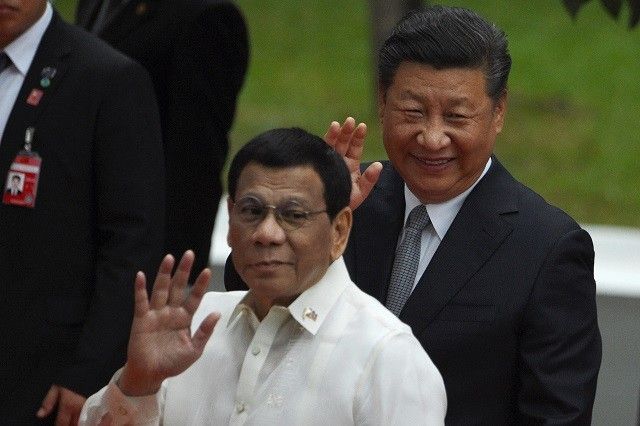Commentary: China’s grand Belt and Road Initiative and the Duterte admin

Maritime Southeast Asia is located in an important crossroads between the Indian and Pacific Oceans near the center of a newly configured region called the Indo-Pacific.
The littoral states constituting this sub-region—the Philippines, Malaysia, Indonesia, Singapore, Brunei and Vietnam—are strategically located in a maritime junction linking significant sea-lanes of trade, commerce and communication such as the South China Sea and the Malacca Straits. Maritime Southeast Asia is also a vital junction of sea lanes of communication linking Northeast Asia, South Asia, the Middle East, Africa and Europe.
China’s relations with these states are complex and ambiguous. This stems from their geographic proximity, historical baggage and the implications of the constantly changing dynamics of China’s comprehensive power and presence in maritime Southeast Asia.
Furthermore, these relations are made more complicated as China claims almost 80% of the South China Sea along with the Paracels and Spratly Islands, which are also claimed by four littoral countries—the Philippines, Brunei, Malaysia and Vietnam.
By staking its expansive maritime claims in the South China Sea, China enhances its territorial integrity and ensures its national security. China regards maritime Southeast Asia as a geopolitically vital region.
For this reason, the sub-region serves as a social laboratory for testing China’s grand strategy termed as the “Great Rejuvenation of the Chinese Nation.” A vision to create a Sino-centric regional order through the application of the Belt and Road Initiative (BRI) on the Philippines.
The BRI and Southeast Asia
The BRI aims to reshape the geo-political landscape of the Indo-Pacific region and beyond. Specifically, it is directed to mollify potential partners in Southeast Asian countries in light of China’s assertive and hostile policies relative to the South China Sea dispute.
Through the BRI, China is poised to make huge investments in Southeast Asian infrastructure, including railways, highways, seaports, power plants and digital communication network facilities.
Since 2016, President Rodrigo Duterte has pursued an appeasement policy on China through “calibrated” foreign efforts characterized by cozying to China. This is intended to promote Philippine-China bilateral relations to result in major infrastructure and investment projects and other forms of cooperation to restore mutual trust. During their first meeting, President Xi Jinping and Duterte talked about enhancing practical bilateral cooperation.
Specifically, Xi asked Duterte to coordinate their development strategies and cooperate with each other within the framework of the BRI. They issued a joint communique that laid down areas for joint development and signed memorandums of cooperation in 13 areas including economics and trade, investment, financing, and infrastructure construction.
China pledged US$13.5 billion to boost economic cooperation between the two countries. Of that amount, US$9billion was allocated for infrastructure development.
‘Corrosive capital’
A vital component of BRI is predatory or corrosive capital. Emanating from authoritarian states, corrosive foreign investments assail governance vulnerabilities in recipient countries. This type of capital has become a threat to democracy and free market as it corrodes the spirit of democratic institutions and private enterprise. Its presence in Europe, Africa, Latin America and Asia has largely impacted the emerging markets and fragile economies.
With the implementation of flagship infrastructure projects under the Duterte administration’s Build, Build, Build Program (BBB), the president’s close ties with China further strengthens the BRIs synergy with his centerpiece program. Nevertheless, BRI continues to draw criticism from the international community for its lack of transparency and disregard of democratic values such as human rights and the rule of law.
Empty promises?
Almost five years after Duterte’s historic Beijing visit, his appeasement policy has yet to produce substantial financial returns. The Duterte administration sought Chinese investments in the reclamation of the Davao coastline, seaport and bulk terminal projects in cities such as Davao, Cebu and Manila, and highways and railways projects amounting to US$9 billion.
In May 2017, Duterte went to Beijing to personally follow up on his initial negotiation with Xi in October 2016. However, the Philippine ambassador to Beijing indicated that “there were several discussions between the countries regarding these BRI projects, but they remained discussions way into 2019.”
Ongoing BRI projects in the Philippines include the construction of two bridges in Manila and a projected larger South Long-Haul Railway that will connect ports and special economic zones in the main island of Luzon. But according to the ambassador. there is no single major port development project that “would have been more in line with the BRI’s thrust of increasing regional connectivity and allow the Philippines to be linked to the Maritime Silk Road.”
Prior to Xi Jinping’s visit to the Philippines on Nov. 20, 2018, Philippine economic technocrats disclosed that among the 10 big-ticket projects in the country that China promised to finance, only the US$62.09 million Chico River Pump Project materialized.
Despite the Philippine-China rapprochement, Filipino government officials are skeptical about the viability of these infrastructure projects given the geopolitical risk arising from the competing territorial claims in the South China Sea.
The Nomura Research Institute opined: “Even today, amid President Duterte’s high popularity ratings, there are growing concerns about the mismatch between the speed with which China has built the structures on disputed islands and how little progress has actually been made on infrastructure projects or the FDI inflows that the Philippines receive from China so far.”
Renato Cruz de Castro is a trustee and convenor of the National Security and East Asian Affairs Program of think tank Stratbase ADR Institute.
- Latest






























